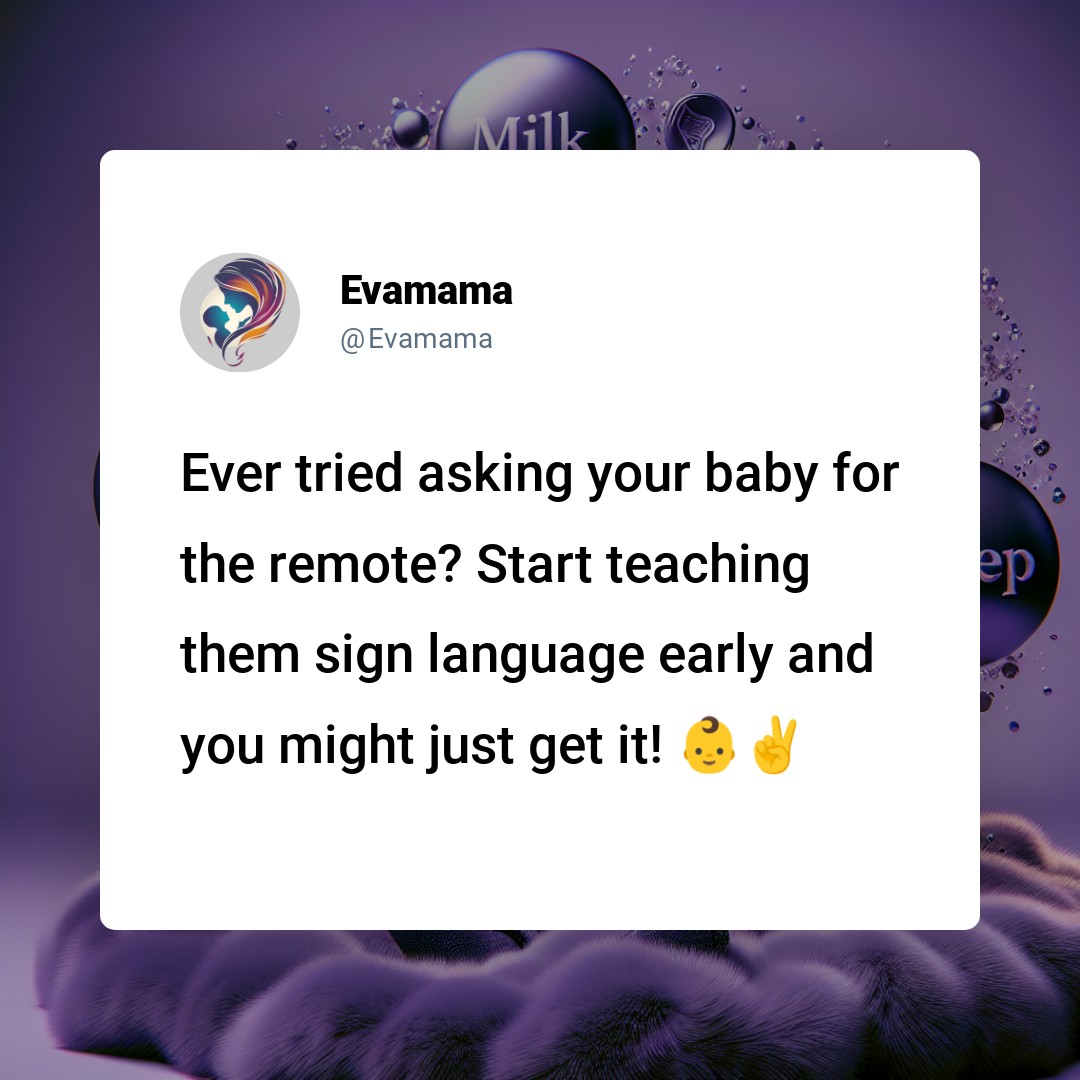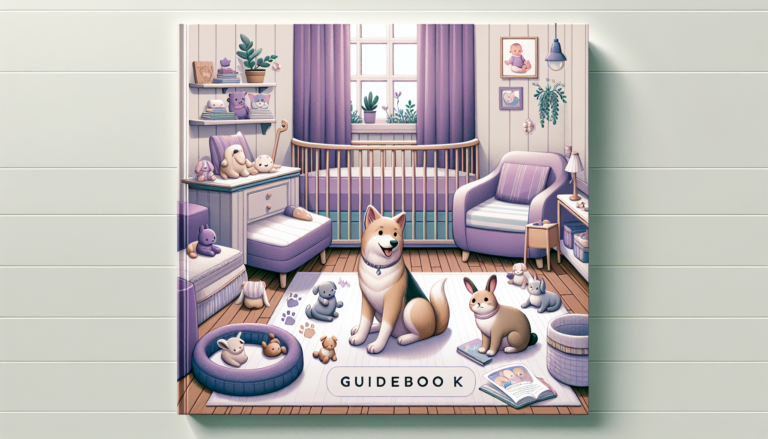Exploring Baby Sign Language: Key Signs and Ideal Start Time
When Should You Start Teaching Baby Sign Language?
The best time to start baby sign language is around 6 months, when your little one’s curiosity in communication starts to sparkle. Imagine your baby’s glee as they successfully tell you they want ‘more’ without a single cry – that’s the magic of baby sign language.
It’s like unlocking a secret channel to your child’s thoughts. As a mom, I’ve felt the thrill of those first non-verbal ‘conversations’ and the relief of fewer guessing games.
This guide will gently walk you through the signs your baby is ready to start signing and the key gesturesto bring you closer. Because when it comes to nurturing that bond with your baby, every little sign counts.

Understanding the Best Time for Baby Sign Language
You might be wondering when the right time is to start teaching your baby sign language. The answer isn’t one-size-fits-all, but typically, babies are ready to begin learning signs when they start developing a desire to communicate. This can be as early as 6 months old. At this stage, they begin to grasp the concept of cause and effect – that their actions, such as signs, can elicit responses from you.
Developmental Milestones to Watch For
Before introducing sign language, look for key developmental milestones. Is your baby making eye contact? Do they follow objects with their eyes? These are signs that they’re ready to engage. Also, notice if they’re trying to mimic your actions or sounds. This imitation is a precursor to communication and a green light for you to start signing.
Expert Advice on Baby Sign Language
Pediatricians and speech-language pathologists often suggest that the earlier you start, the better. They’ve observed that babies who sign tend to be less frustrated, as they can express their needs and feelings before they can speak. However, it’s needed to proceed with patience and repetition. Babies learn through consistency, so regular practice is key.
Common Concerns: Will Sign Language Delay Speech?
A common worry is that sign language might delay verbal speech. Rest assured, research indicates the opposite. Signing can actually encourage speech development because it involves the same language centers in the brain. When you sign and speak simultaneously, you’re reinforcing language skills.
Integrating Signs into Daily Routines
To effectively integrate sign language, weave it into your daily routines. When it’s mealtime, use the sign for “eat.” At bath time, introduce the sign for “water.” This contextual learning helps your baby make connections between the signs and their meanings.
The Importance of Patience and Repetition
Benefits of Early Communication for Cognitive Development
Early communication through sign language isn’t just about reducing frustration. It’s also linked to cognitive development. Studies show that babies who sign often have larger vocabularies and may even have higher IQ scores later in life. This early boost in communication skills can have long-lasting benefits.
Table: Key Signs to Start With
| Sign | When to Use It | Tips for Teaching |
|---|---|---|
| Eat | Mealtime | Sign before giving food, say “eat” |
| Milk | Feeding time | Sign while preparing a bottle or breastfeeding |
| More | During play or meals | Sign when they seem interested in continuing an activity |
| All done | End of an activity | Sign when transitioning away from an activity |
The Readiness of the Child: A Personalized Approach
Each child is unique, so tailor your approach to your baby’s readiness. Some may show interest earlier than others. Watch for their cues and respond accordingly. If they seem engaged and curious, it’s a great time to start.
The Narrative of Baby Sign Language
Imagine this: Your baby is fussing, unable to tell you what they want. You feel helpless. Now, picture a different scenario. Your baby signs “milk,” and you understand immediately. This shift from frustration to communication is the power of baby sign language. It’s a journey filled with ‘aha’ moments as your baby realizes they can communicate with you, and you with them.
Final Thoughts on Timing and Techniques
Exploring Baby Sign Language: Important Signs for Your Little One

Imagine the joy of understanding your baby’s needs before they can even speak. Baby sign language opens up a world of communication between you and your little one, addressing their immediate needs and emotional expressions. Let’s dive into the key signs that can enhance your bond and support your baby’s language development.
The Basics: Meeting Your Baby’s Immediate Needs
To start, focus on signs that fulfill your baby’s basic needs. These are the building blocks of baby sign language.
- Milk: Mimic milking a cow with your hand to signify it’s time for feeding.
- More: Tap your fingertips together when your baby wants another helping of their favorite puree.
- Eat: Bring your hand to your mouth as if holding food, a clear signal for mealtime.
- Sleep: Rest your head on your hands to indicate it’s time to catch some Zs.
- Help: Extend your hand out, palm up, moving it up and down to request assistance.
Emotional Expressions: Connecting on a Deeper Level
Beyond basic needs, teach signs that convey feelings, strengthening your emotional connection.
- Thank You: Touch your chin and move your hand away, teaching gratitude.
- Hurt: Place a finger on the spot where it hurts, showing empathy and care.
- Love: Cross your arms over your chest, a heartwarming gesture of affection.
Consistency is Key: The Art of Clear Sign Language
- Repetition: Repeat signs in different contexts to solidify their meaning.
- Patience: Give your baby time to learn and respond with their tiny hands.
A Table of Signs: Your Quick Reference Guide
| Sign | Gesture Description | When to Use It |
|---|---|---|
| Milk | Mimic milking a cow with your hand | Feeding time |
| More | Tap fingertips together | Wanting additional items |
| Eat | Hand to mouth as if holding food | Mealtime |
| Sleep | Rest head on hands | Bedtime |
| Help | Hand out, palm up, moving up and down | Needing assistance |
| Thank You | Touch chin, move hand away | Showing gratitude |
| Hurt | Finger on spot where it hurts | Expressing pain |
| Love | Cross arms over chest | Showing affection |
Promoting Language Development Through Sign
By integrating sign language into your daily routine, you’re not just easing communication; you’re laying the foundation for verbal language skills.
- Dual Learning: Pairing signs with spoken words accelerates language acquisition.
- Cognitive Boost: Studies suggest signing can enhance cognitive development.
The Bond That Grows: Sign Language and Parent-Child Connection
As you and your baby learn to communicate through signs, you’ll notice a deeper bond forming.
- Understanding: Deciphering your baby’s signs leads to fewer frustrations.
- Interaction: Each sign becomes a conversation starter, a moment of learning.
Embracing the Journey: The Joy of Baby Sign Language
Embarking on the journey of baby sign language is an adventure filled with smiles, giggles, and moments of pure connection. As you teach these signs, celebrate each small victory, each tiny hand movement that speaks volumes. You’re not just teaching signs; you’re nurturing a relationship that will last a lifetime.





